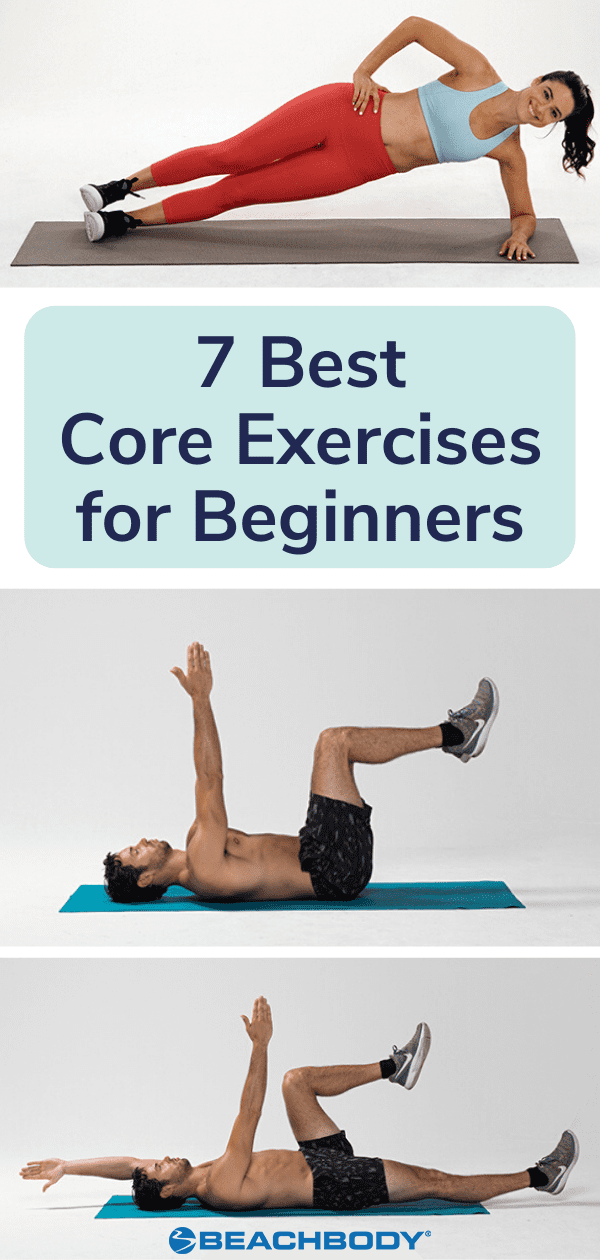9 of the Best Core Exercises for Beginners
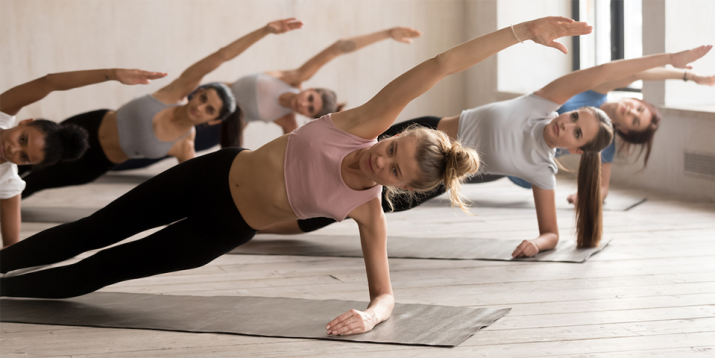
If you’re new to exercising, you might be wondering where to begin.
A good place to start is with your core, since it’s at the center of everything you do.
That’s why integrating some of the following core exercises for beginners can help you not only reach your fitness goals, but also help you prevent injury in and out of the gym.
What Is Your Core?
When you think of the word “core,” you might envision six-pack abs (a.k.a. your rectus abdominis).
But a strong, healthy core is about much more than having a washboard stomach, says Julia Halpin, an NASM certified personal trainer based in New York City.
Your “core” includes all the muscles in your trunk, including your deep core muscle (the transverse abdominis) and obliques. They surround your abdomen on all sides allowing you to twist, bend, rotate and hold your stomach in, support your spine and pelvis, and aid in posture.
Why Do You Need a Strong Core?
“A strong core is imperative for becoming stronger and more fit, safely and effectively (without causing injury),” Halpin says.
Your core is your center, and it helps both your lower body and upper body support and stabilize, which is important for joint health, Halpin says.
We need that stabilizing action when we work out — whether we’re jogging, lifting weights, or doing yoga — and when we’re doing daily activities, like carrying our kids, hauling groceries, and even vacuuming.
If you’re new to working out (or feel like you have a weak core), these core exercises for beginners will help you develop a stronger core and get you started.
They’re basic, beginner-friendly moves that will work your entire midsection, without being overly complicated.
And, as a bonus, you can do them all from comfort of your own home, without any equipment!
1. Forearm Plank
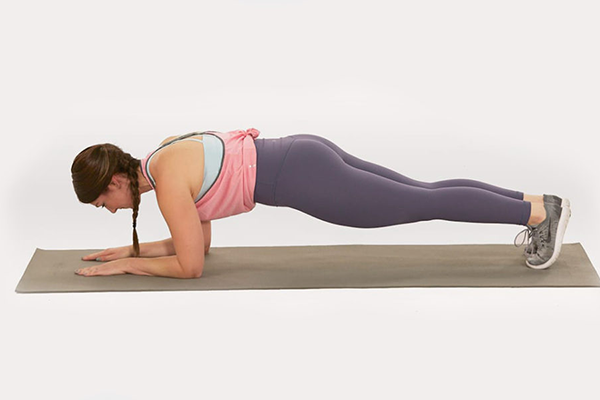
- Start in a push-up position, and then come down to your forearms instead of your hands, with your elbows lined up directly under your shoulders.
- Squeeze your glutes and brace your core (imagine someone is about to punch you in the gut) to lock your body into a straight line from head to heels.
- Hold this position for 30 seconds to start, working up to 90 seconds. Rest for one minute. Repeat three to five times.
2. Side Plank
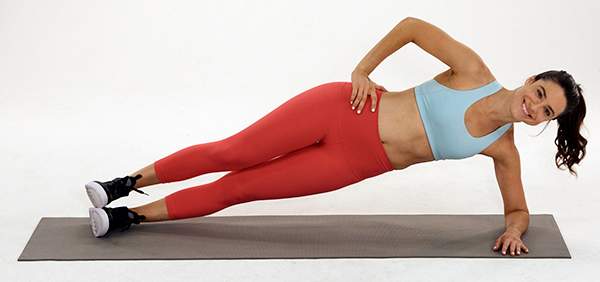
- Assume a forearm plank position: forearms and balls of your feet on the floor, shoulders directly above your elbows, head neutral, and your entire body straight from head to heels.
- Roll onto your left foot, and turn your hips and chest so your right hip is pointing toward the ceiling. Raise your right arm up in the air. Your left forearm should be perpendicular to your body, with your fingertips pointing the direction you’re facing.
- Keep your body straight and your core engaged. If you need to modify, drop your left knee to the mat for stability.
- Hold this position for 30 seconds to start, working up to 90 seconds, then switch sides. Rest for one minute. Repeat three to five times.
3. Bird Dog
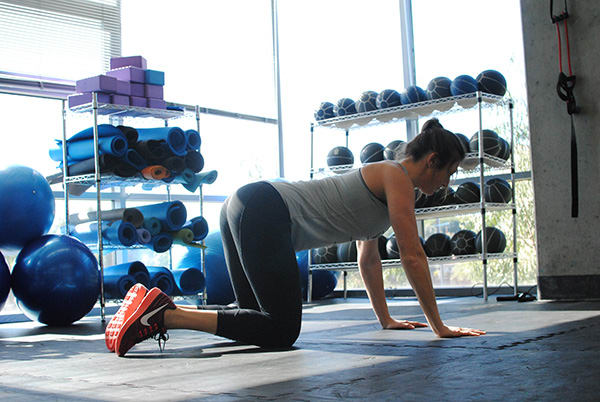
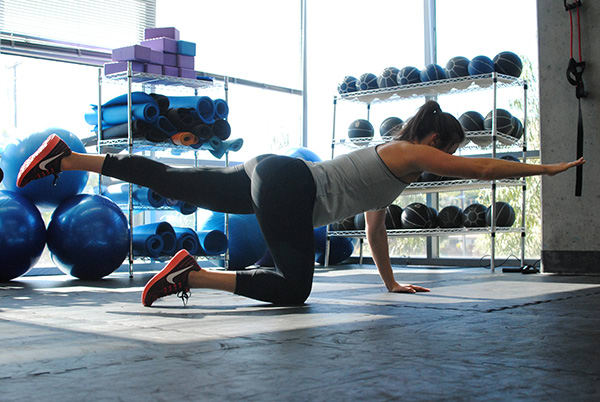
- Get down on your hands and knees with your hands directly below your shoulders and your knees directly below your hips. This is the starting position.
- Keeping your back flat and core braced, simultaneously extend your left leg straight behind you and your right arm straight in front of you.
- Pause, and then return to the starting position.
- Repeat with your right leg and left arm.
- Do equal reps on both sides.
4. Bent Leg Lifts
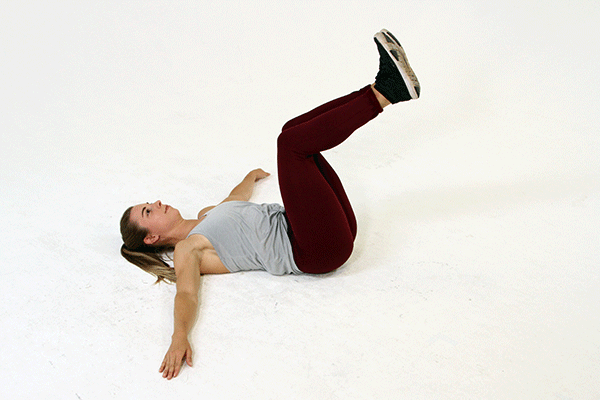
- Lie on your back with your legs bent and feet flat on the ground, a few inches from your butt. You can place your your hands under your lower back for support.
- Engage your core and lift your feet off the ground a couple of inches so your shins are parallel to the ground. Keep your low back pressed into your hands.
- Reverse the motion and tap your feet back on the ground.
- Continue this movement 30 seconds to begin with, and work your way up to 90 seconds as you increase strength.
5. Bent Knee Wipers
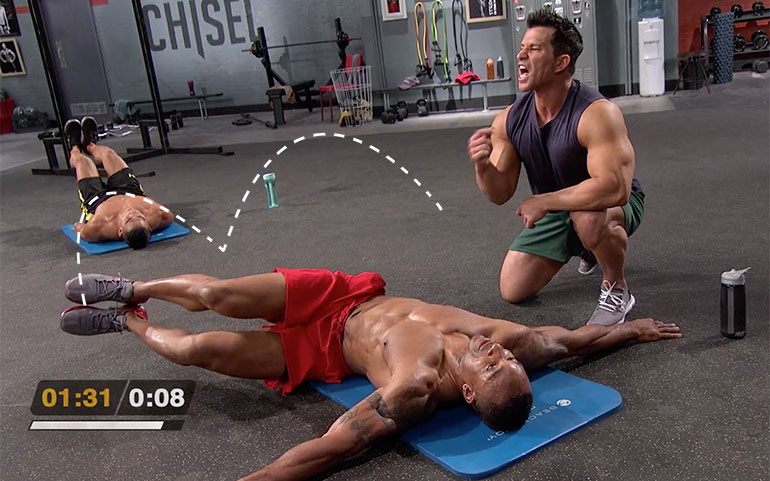
- Lie flat on your back on your mat, with your arms extended out to your sides. Lift your legs up, bring them together, and bend them so they form a 90-degree angle with your shins parallel to the floor and your knees stacked over your hips
- Engage your core so your back is pressed flat into the ground.
- As you exhale, drop your knees to the right, keeping your legs together. Don’t drop them so far that your shoulders come off the ground.
- Return to center on an inhale, then exhale and repeat on the left side.
- Do 30 seconds to start, working up to 90 seconds.
6. Dead Bug
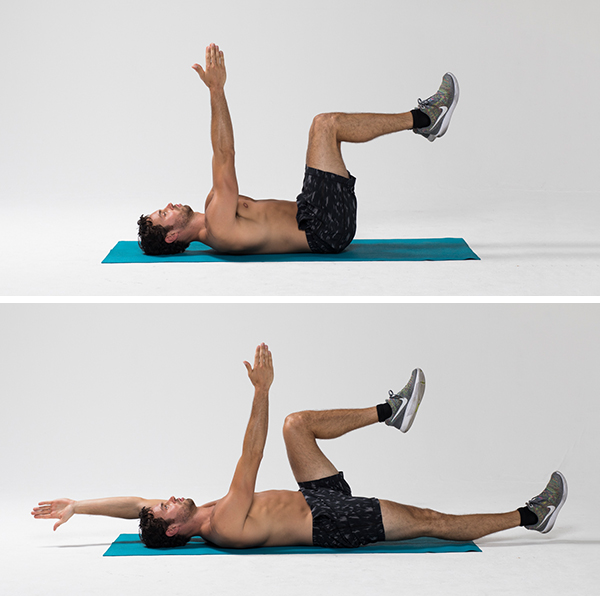
- Lie flat on your back on the floor with your arms extended straight in front of your with your hands lined up over your shoulders, and your legs bent at 90 degrees like you are sitting in a chair. Press your low back into the floor and brace your core to maintain this flat-back position throughout the entire exercise.
- Slowly lower your right leg and left arm to within a few inches of the floor (your arm should end up above your head, not out to the side). Only go as low as you can without your low back coming off the floor.
- Pause, and then squeeze your abs to slowly reverse the movement to return to the starting position.
- Repeat with your left leg and right arm. Continue alternating sides. Do 30 seconds to start, working up to 90 seconds.
7. Superman
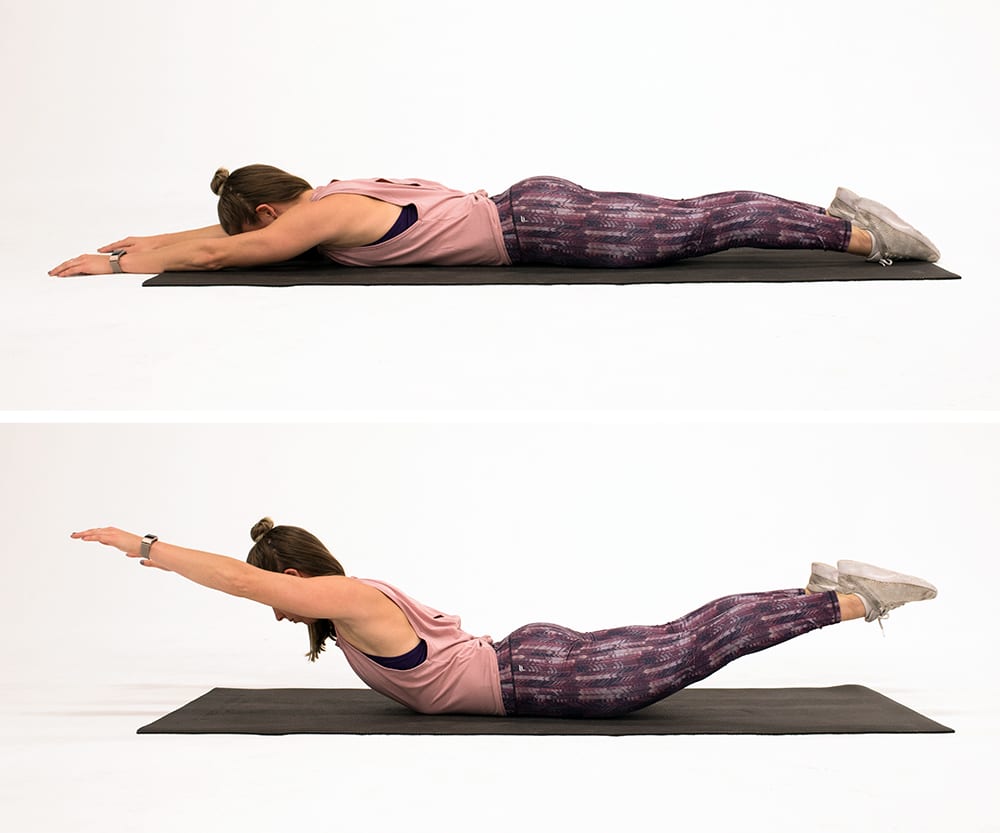
- Lie face-down on the floor with your arms extended in front of you (palms down) and your legs extended behind you. This is the starting position.
- Keeping your neck in line with your spine, lift your arms, chest, and legs off the floor.
- Pause, and then lower your arms and legs back to the starting position.
- Do 30 seconds to start, working up to 90 seconds.
8. Glute Bridge
- Lie on your back, arms down by your sides. Bend your knees and plant your feet flat on the floor.
- Pull in through your navel to brace your core muscles and then squeeze your glutes to press your hips up so your body forms a straight line — no arching — from knees to shoulders.
- Keep your head on the floor and eyes focused on the ceiling.
- Hold the position for a beat, and then lift and lower and repeat.
9. Bear Hold
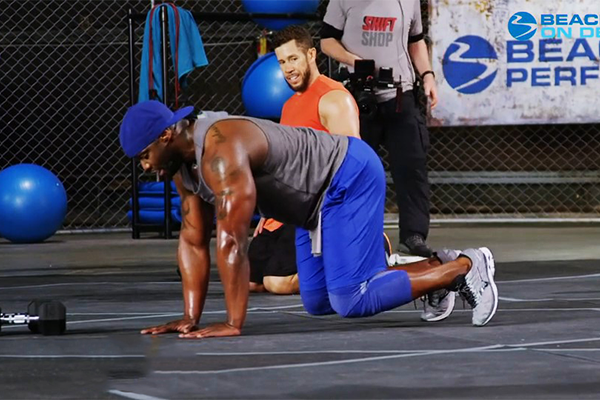
- Set up in a tabletop position with your hands under your shoulders and your knees under your hips. Your head should be neutral relative to your spine.
- Make sure your low back is flat, your neck lengthened, and your abs are engaged.
- Tuck your toes and press your hands into the floor to lift your knees a couple inches off the floor.
- Squeeze your core and hold, remembering to breathe evenly.
- Hold for 30 seconds to a minute.
Tips on Starting a Core Exercise Routine for Beginners
Many core exercises for beginners involve the cue to engage or brace your core. This action provides stability, Halpin says, and helps you perform the movements correctly.
“Before crunching or planking or doing any other core-focused exercise, it’s important to be able to draw your belly in, belly button to spine,” she advises.
If you’re struggling to understand what exactly this means, follow these pointers.
- Take a big breath in, let your belly expand, then exhale with a little force.
- Feel your belly pull back in, and tighten your abdominal muscles.
Halpin recommends starting with two core workouts a week, which should take no more than 15 minutes.
“Work your way up in frequency and intensity as your body becomes overall stronger,” she says. “The body takes time to adjust to new things.”
Over time, as your core gets stronger, you may notice that your workouts and your daily life feel easier.
That’s the goal, says Halpin: “You want to build ‘muscle memory,’ so you don’t have to think about it all the time, and so your body functions better.”
This will help you become efficient at turning on your core so you don’t have to focus so much on consciously having to engage it in daily life. Win!
